FW
The President of Spain, Pedro Sánchez has announced that its Council of Ministers will soon declare a state of alert in the country. This situation will last for the next fifteen days, The Government centralises decisions and can decree the limitation of movement of people, occupy industries or factories or rationalise consumption. In addition, this measure also penalises those citizens who do not comply with the regulations.
The community of Madrid and Catalonia has already decreed the closure of all stores in the country except food stores and pharmacies with an aim to halt the pandemic. Inditex has also announced a temporary closure of some of its stores across three regions in Spain. Tendam, owner of Cortefiel, Springfield and Women’Secret also revealed plans to carry out the same measure from today. Desigual also closed all its stores in Spain and Portugal.
India’s prominent trade fare ASW 2020 (Apparel Sourcing Week) has partnered trade associations like Japan External Trade Organisation, Indo Brazil Chamber and the Turkish Indian Chambers of Commerce and Industry to bring visitors from these countries.
Trade associations have always played a key role in enhancing business opportunities for a particular industry or sector they represent their chief focus being on establishing strong collaborations between companies and countries. Some of the significant functions of such associations also known as industry trade groups, business associations and sector associations include developing and boosting networking opportunities; building business relationships; enhancing exchange of ideas through various workshops and similar knowledge forums and establishing consumer confidence in the products or services at display.
Since its inception last year, the concept of ASW 2020 was built on the four pillars of opportunity, knowledge, inspiration and networking which has attracted the attention of various country associations that are looking at the Indian subcontinent either as an emerging market or as a potential window to Asia.
Another prominent name is the Bangladesh Garment Manufacturers and Exporters Association (BGMEA). It is one of the largest trade associations in the country representing the readymade garment industry, particularly the woven garments, knitwear and sweater sub-sectors with equal importance. A large contingent of members from the association are exhibiting at the show.
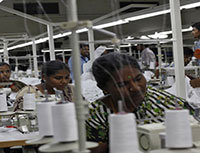 Since the last few years, the Indian textile industry has been facing problems like technological obsolesce, high input cost (power & capital), poor access to credit, fragmented units, absence of fiber neutrality etc. To address these issues, the government has been implementing various schemes over the years.
Since the last few years, the Indian textile industry has been facing problems like technological obsolesce, high input cost (power & capital), poor access to credit, fragmented units, absence of fiber neutrality etc. To address these issues, the government has been implementing various schemes over the years.
It is now formulating a New Textile Policy for overall development of the sector. Based on inputs from all the state governments, individuals through e-portal and different associations, this policy focuses on topics like cotton, silk, jute, wool, man-made fibre, handloom, handicrafts, powerloom, technical textiles, technology & machinery upgradation, infrastructure (spinning, weaving & processing) and human resource development.
ATUFS for technology up gradation in the industry
Besides launching a separate scheme to boost production in knitting and knitwear cluster at Ludhiana, Kolkata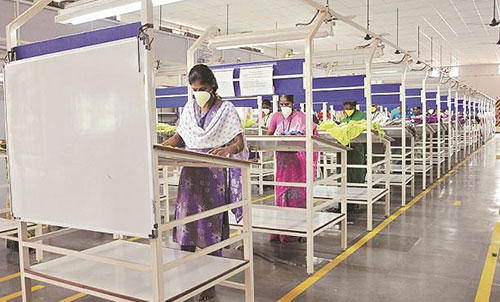 and Tirupur, the government will also implement the Amended Technology Up-gradation Fund Scheme (ATUFS) for technology up-gradation of the textile industry. The scheme will incentivise production with an outlay of Rs.17,822 crore during 2016-2022. This will help the industry to not only attract investment worth Rs.1 lakh crore but also generate 35.62 lakhs jobs by 2022.
and Tirupur, the government will also implement the Amended Technology Up-gradation Fund Scheme (ATUFS) for technology up-gradation of the textile industry. The scheme will incentivise production with an outlay of Rs.17,822 crore during 2016-2022. This will help the industry to not only attract investment worth Rs.1 lakh crore but also generate 35.62 lakhs jobs by 2022.
Government launched a special package of Rs.6,000 crore in 2016 to boost investment, employment and exports in the garmenting and made-ups sector. The package provided full refund to exporters under Remission of State Levies (ROSL) for the state level taxes. It also provided a production linked additional incentive of 10 per cent under the Amended Technology Up-gradation Fund Scheme (ATUFS).
Some of the other schemes launched by the government include: The National Handloom Development Programme; Comprehensive Handloom Cluster Development Scheme; Handloom Weaver Comprehensive Welfare Scheme; Yarn Supply Scheme; National Handicrafts Development Programme (NHDP) and Comprehensive Handicraft Cluster Development Schemes.
It also launched the Power Tex India - a comprehensive scheme for the powerloom sector; Silk Samagra – an integrated scheme for silk development; Jute ICARE scheme for increasing the income of farmers through different interventions and North East Region Textile Promotion Scheme (NERTPS) scheme for promoting textiles industry.
Scheme for SITPs
The Government is implementing the Scheme for Integrated Textile Park (SITP) which provides support for creation of world-class infrastructure facilities for setting up of textile units. Till date, 56 textile parks have been sanctioned under SITP which are under various stages of implementation.
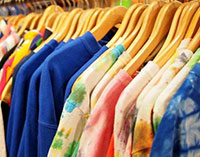 Apparel sourcing in 2020 started with similar theme of volatility and rapid change amongst major suppliers for US brands and retailers, new patterns are now emerging as the year progresses.
Apparel sourcing in 2020 started with similar theme of volatility and rapid change amongst major suppliers for US brands and retailers, new patterns are now emerging as the year progresses.
China’s supremacy challenged by smaller countries
One of the most notable changes is the fading of China’s unchallenged dominance as a global apparel supplier. The country’s top spot is being challenged by smaller rivals like Vietnam, Bangladesh and Cambodia whose shipments rose dramatically at the beginning of the year. According to an OTEXA report, skewed by a combination of the end-of-month Lunar New Year factory closing and the onset of the COVID-19 epidemic US apparel imports from China dropped 36.09 per cent in January to $1.62 billion. As a result, the share of Chinese imports declined to 28.9 per cent compared to 33 per cent a year earlier.
Tim Boyle, Chairman, president and CEO of Columbia Sportswear, feels this was due to temporary factory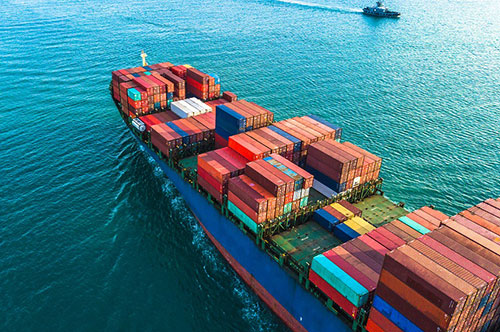 closures and the pace of workers returning to work which impacted the ability of the company’s contract manufacturers to source certain raw materials and to produce and fulfill finished goods as expected.
closures and the pace of workers returning to work which impacted the ability of the company’s contract manufacturers to source certain raw materials and to produce and fulfill finished goods as expected.
Apparel imports from Vietnam increased by 4.12 per cent in January to $1.32 billion, reveals OTEXA data. Market share rose to 16.4 per cent for the year ending Jan. 31 compared to 14.8 percent share a year earlier. Bangladesh started the year with a 17.03 per cent increase in shipments to reach $622 million in value. On the other hand, Cambodia’s imports jumped 19.91 percent to $277 million.
Indonesia’s shipments rose 1.45 per cent to $413 million, while share of India’s imports which had reached 4.84 per cent in 2019, declined by 2.81 per cent in January 2020 and was worth $371 million.
Mixed results from countries in Western hemisphere
Countries in Western hemisphere like Honduras, Mexico and El Salvador registered mixed results. Imports from Honduras increased by 0.87 per cent to $154 million while those from Mexico declined by 14.79 percent to $205 million. El Salvador’s imports also declined 3.08 percent to $118 million while those from Pakistan increased by 0.36 percent to 131 million.
The Bureau of Economic Analysis revealed the US monthly international trade deficit decreased to $45.3 billion in January from a revised $48.6 billion in December. The goods’ deficit also decreased to $67 billion. Of this, the goods deficit with China decreased by $2.1 billion to $23.7 billion in January.
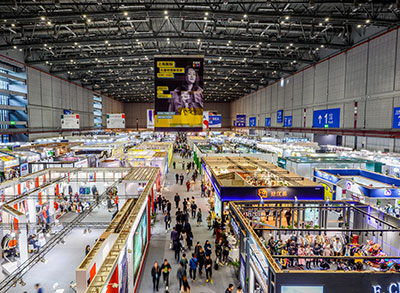 The Shanghai stock exchange is showing an upward trend that is making a positive impact on companies. CHIC, China International Fashion Fair, is expanding into southern China. From July 15th to 17th, 2020, the premiere of CHIC Shenzhen is planned at the Shenzhen World Exhibition and Convention Center. Chen Dapeng, President of CHIC, China International Fashion Fair and China National Garment Association said, "CHIC Shenzhen has been planned for a long time and can be implemented in view of the now positive development in China. Here, the focus is on the national fashion manufacturers and the densely populated, flourishing southern Chinese retail landscape. CHIC Shanghai will continue to have an international focus. " Together with Intertextile Shenzhen Apparel Fabrics and the Shenzhen Yarn Expo, CHIC Shenzhen will offer a platform called "Greater Bay Area International Textile and Apparel Expo" for the national fashion industry and fashion trade in southern China. The three trade fairs will be presented on 100,000 square meters; 30,000 square meters are reserved for CHIC Shenzhen. A total of 2,000 exhibitors are expected. The exhibition center, built on the site of the former airport of the city, currently covers 400,000 square meters for exhibition halls, after completion of construction of 500,000 square meters. The trade fair location in Shenzhen is located in the province of Guangdong (canton), which has over 114 million inhabitants. The Shenzhen Special Economic Zone, also known as China's "boomtown", has approximately 15 million inhabitants. The south of China is a conurbation of the Chinese fashion industry and trade, numerous clothing clusters (menswear, womenswear, childrenswear, denim, casualwear, wedding dresses) are here and based in the neighboring provinces, e.g. Fujian. These two provinces, together with Jiangsu and Zhejiang, are responsible for 75% of the total textile production in China.
The Shanghai stock exchange is showing an upward trend that is making a positive impact on companies. CHIC, China International Fashion Fair, is expanding into southern China. From July 15th to 17th, 2020, the premiere of CHIC Shenzhen is planned at the Shenzhen World Exhibition and Convention Center. Chen Dapeng, President of CHIC, China International Fashion Fair and China National Garment Association said, "CHIC Shenzhen has been planned for a long time and can be implemented in view of the now positive development in China. Here, the focus is on the national fashion manufacturers and the densely populated, flourishing southern Chinese retail landscape. CHIC Shanghai will continue to have an international focus. " Together with Intertextile Shenzhen Apparel Fabrics and the Shenzhen Yarn Expo, CHIC Shenzhen will offer a platform called "Greater Bay Area International Textile and Apparel Expo" for the national fashion industry and fashion trade in southern China. The three trade fairs will be presented on 100,000 square meters; 30,000 square meters are reserved for CHIC Shenzhen. A total of 2,000 exhibitors are expected. The exhibition center, built on the site of the former airport of the city, currently covers 400,000 square meters for exhibition halls, after completion of construction of 500,000 square meters. The trade fair location in Shenzhen is located in the province of Guangdong (canton), which has over 114 million inhabitants. The Shenzhen Special Economic Zone, also known as China's "boomtown", has approximately 15 million inhabitants. The south of China is a conurbation of the Chinese fashion industry and trade, numerous clothing clusters (menswear, womenswear, childrenswear, denim, casualwear, wedding dresses) are here and based in the neighboring provinces, e.g. Fujian. These two provinces, together with Jiangsu and Zhejiang, are responsible for 75% of the total textile production in China.
With CHIC Shenzhen, the organizers of CHIC are offering the regional fashion industry an additional podium and, in the tried-and-tested combination of the individual trade fair platforms, customers have the option of "one-stop shopping" in southern China. The decision of the catch-up date for the March event of CHIC Shanghai is still pending and depends on the further development of the epidemic situation in China. CHIC Shenzhen is organized by China National Garment Association, the Sub-Council of Textile Industry of CCPIT, and China World Trade Center.
The market for US women’s activewear remained flat in 2019, trailing men’s active apparel sector for the third consecutive year. Among men, activewear sales were up two per cent in the same period. One reason could be that American men have long had national retailers serving their activewear needs, while there’s no such equal counterpart for women. Women between the ages of 25 and 34 in the US traditionally make up the majority of women’s activewear sales, but last year sales for this group fell. American women are more active than ever but they’re not buying as much workout wear as their male counterparts. Leisure and performance goods drive most women’s activewear sales.
The women’s athletic apparel market in the US remains the sports industry’s greatest failure, yet its biggest opportunity. Traditional athletic brands continue to struggle at the expense of vertical brands. The activewear retail model is not in sync with today’s woman.
Brands and retailers have to put a lot of resources behind a women’s product and make a sincere connection and understand where she shops. But with more women and girls increasingly playing sports and getting active, growth in the category is expected to follow. Women are running more races than men for the first time in history.
Touchpoint and Spinnova have jointly launched an apron. The objective of the collaboration is to make the world’s most sustainable workwear collection. The apron named Tapio is 100 per cent wood-based, made without harmful chemicals, and quickly biodegradable. The apron can be recycled into new fiber in the Spinnova process, without dismantling. The apron contains no materials that shed microplastics and has no plastic or metal parts to weaken its recyclability. The apron is also undyed and uncoated.
Touchpoint is a Finnish pioneer in sustainable workwear. It is also building a closed-loop solution for domestic textile waste in the B2B segment. The recycling facility, Rester, starts operating in the beginning of 2021. Spinnova, also from Finland, is a sustainable fiber company that has developed an ecological breakthrough technology for manufacturing cellulose-based textile fiber. Spinnova’s patented technology includes zero harmful chemicals and zero waste or side streams, making the fiber and the production method the most sustainable in the world. The fiber is also recyclable with the Spinnova process without harmful chemicals. Spinnova’s raw material commitment is to only use certified wood or waste streams.
The apron’s most interesting circular feature is the fact that the apron can be recycled into new fiber in the Spinnova process without dismantling.
For the fourth quarter Gap’s sales were up one per cent. However, Gap brand comparable sales fell five per cent with Banana Republic sales flat and the company’s activewear brand Athleta lifting two per cent for the quarter.
Meanwhile Katrina O’Connell, Chief Financial Officer of Old Navy, was named the company’s new chief financial officer, succeeding Teri List-Stoll, who has served in the role since January 2017. Mark Breitbard has been chosen to lead the company’s specialty brands segment as well as Gap’s Asia business and its franchise category. With Syngal recently promoted to CEO of Gap, Nancy Green will now lead the Old Navy brand, replacing Syngal in the interim. Syngal is expected to deliver value from the portfolio of brands over the long term. The India-born Syngal moved to Canada and later to the US with her family when she was a child.
Gap is currently the largest specialty retailer in the United States, with 1,35,000 employees and 3,727 stores worldwide, including 2400 in the US. The company’s management structure will be slimmed down in order to speed up decision making as well as a refreshed senior compensation plan, based around performance and accountability. Gap owns brands like Old Navy, Banana Republic, Athleta, and Hill City.
Ebitda margins of leading Indian textile and apparel companies have risen by one per cent during the current fiscal. Their employee cost index and raw material cost index have also increased by six per cent and two per cent respectively. This shows constraints on resources, and companies have to rework on their costing and reengineer their systems.
Among these companies are Arvind, Vardhman, Welspun, Trident and Raymond. The textile industry is a labor-intensive industry. So its growth plays a vital role in job creation. Textile exports from many Indian states have contracted in the last five years.
During this period, exports of textile and apparel commodities have shown a decline of seven per cent. The downtrend of exports of fibers, filaments, yarns and home textiles continues. Fiber export and yarn export are down by 47 per cent and 30 per cent respectively. Notably, fabric and apparel exports increased eight per cent and one per cent recepectively. As far as imports are concerned, India’s imports of textile and apparel commodities have increased by 16 per cent in this period. Fabric imports were down by three per cent, while fiber, filament, yarn, apparel and home furnishing imports increased. Fiber imports increased by 53 per cent and yarn imports increased 18 per cent.
At its upcoming meeting, the GST Council plans to address the tax rates for sectors including textiles and readymade garments in order to address the inverted duty structure where tax rates on raw materials are higher than the finished products they are used to make.
The GST Council will revaluate the tax rates on a range of items including textiles and readymade garments. The council will also address operational glitches on its GST Network portal and seek a resolution plan from digital technology firm Infosys which won the contract for managing back-end online GST operations in 2015.
The meeting will also see officials address the current inverted duty structure faced by the mobile phone sector and will consider increasing GST on mobile phones to 18 percent from the current rate of 12 per cent. If the council moves ahead with the GST increase, mobile phone prices are expected to increase.
Other matters that the meeting will address include deferment of e-invoicing and QR code benefits as well as the possibility of an exemption of certain industries from e-invoicing. The GST Council could also defer the new return form which was scheduled to come into effect on April 1.












